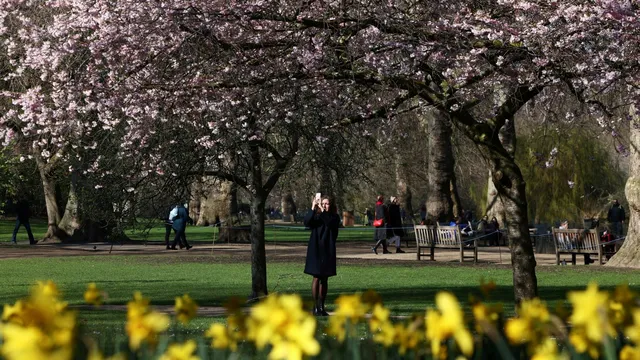
UK braces for freezing rain and snow as weather warnings issued
2025-02-16 11:31- Freezing rain, a rare occurrence in the UK, is anticipated along with snow this weekend.
- The Met Office issued warnings for ice and snow, particularly affecting northeastern and northern parts of England.
- Residents are advised to take precautions and be mindful of hazardous conditions while traveling and outside.
Express your sentiment!
Insights
The United Kingdom is presently experiencing a significant drop in temperatures, with freezing rain—a rare phenomenon for the region—expected to affect various areas. As of February 15, 2025, the Met Office has issued yellow weather warnings for multiple regions, including Yorkshire and the Humber, northwest England, and northeast England until 2 PM today. These alerts predict the possibility of snow and ice, sparking concerns about hazardous conditions on the roads and potentially impacting public health. Particularly, freezing rain is projected, which occurs when supercooled droplets refreeze upon contact with cold surfaces, leading to dangerous icy conditions. This weather, including a combination of freezing rain and snowfall, poses risks to transport and everyday activities. Heavy rain is also anticipated in parts of southern Wales and southwestern England, contributing to the wintry conditions. Forecasters indicate that there is a likelihood of travel disruptions across affected regions, as some areas may witness the accumulation of 2 to 5 cm of snow, particularly in elevated regions. Hence, authorities have urged residents to prepare for difficult travel and to take precautions when outdoors due to potential icy surfaces. Vulnerable populations are especially warned about the health risks posed by these extreme weather conditions, with forecasts suggesting that health and social care services may see increased demand from vulnerable individuals requiring assistance. The combination of severe weather phenomena, including freezing rain and snow is being closely monitored by the Met Office and local health authorities as they assess its potential impact on the overall public safety and health.
Contexts
Freezing rain is a weather phenomenon that occurs when liquid precipitation falls through a layer of warm air and then passes through a layer of subfreezing air near the surface. The critical condition for freezing rain to occur is a temperature inversion, where warmer air masses are positioned above colder air masses. This situation creates a conducive environment for rain to remain in a liquid state even as it travels through a layer of subfreezing air. When the raindrops reach the cold surface, they freeze upon contact, leading to the formation of a layer of ice. This ice can coat surfaces such as roads, sidewalks, and power lines, making freezing rain one of the most hazardous winter weather conditions. It can cause slippery conditions, power outages due to downed power lines, and significant damage to trees and infrastructure. The process of freezing rain generally starts with the rise of warm moist air, often associated with low-pressure systems or warm fronts. This warm air can hold more moisture than cold air, leading to cloud formation and rainfall. As these raindrops fall through warmer air aloft, they remain liquid until they encounter the freezing layer close to the ground, typically at or below 0 degrees Celsius (32 degrees Fahrenheit). When the droplets collide with the surface, which is at or below freezing temperature, they freeze instantly, forming an icy glaze. This phenomenon can produce accumulations of ice that can reach several millimeters in thickness, severely impacting travel and safety. Meteorologists predict freezing rain conditions by monitoring temperature profiles in the atmosphere and identifying regions where warm air remains above areas of cold air at the surface. These predictions are crucial for timely warnings and preparations, especially in regions prone to winter storms. Forecasting freezing rain involves analyzing weather patterns, satellite imagery, and ground temperature observations to assess the likelihood of such events. The challenge in forecasting freezing rain lies in pinpointing the exact areas where the warmer and colder air masses interact, as even slight variations in temperature can change rain into freezing rain. Freezing rain can occur during various times of the year but is most common in the winter months. It contributes to numerous weather-related accidents and is responsible for significant economic impacts, such as transportation delays and utility service interruptions. Regions that experience regular winter weather must be equipped with strategies and infrastructure to manage the effects of freezing rain. Ultimately, understanding the causes and conditions under which freezing rain occurs not only helps in forecasting but also in developing appropriate responses to mitigate its potentially dangerous effects.